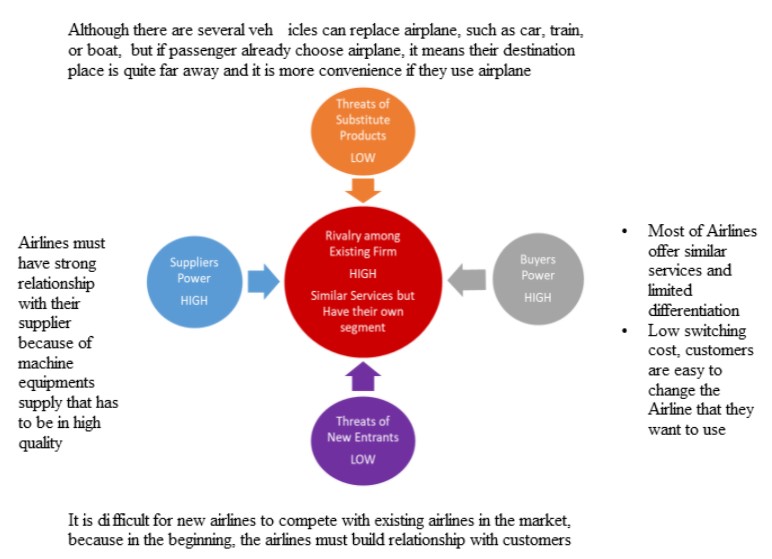Why We Should Learn Porter Five Competitive Forces ?

Portel Five Competitive Forces is a method used to analyze and identify the strengths that shape business patterns. This method is also commonly used to identify industry structure in determining a company’s strategy. Porter’s model can be applied to any segment of the economy to understand the level of competition in the industry and increase the company’s long-term profitability. The application of this method is used as an appeal material and formulates a strategy for the business so that in the future it will be better and easier to compete with other businesses or even more.
In accordance with the name, there are five important things or the forces, namely:
1.Rivalry among Existing Firm
It measures how many and strong competitors are competing with our business / company. Our business will be the center of the market if the same level of market competition is low but different if the level of market competition is high, this indicates that there are many businesses / companies competing in the same product. For example, the Coca-Cola Company in this Rivarlry among Existing Firm is in a high level because there are many businesses in the beverage sector such as juice, coffee, tea, beer.
2.Threats of New Entrants
These strengths determine how easy or difficult it is for a business / company to break into a particular industry. If the industry can generate large profits with few obstacles, in the future there will be many competitors entering the industry. If this happens, the resulting profit will also decrease. Conversely, if the higher the barriers to entry for new competitors, the position of our company / business will be more profitable.
3.Threats of Substitude Products
This obstacle / threat occurs if the buyer / consumer can buy replacement goods at a lower price or substitute products that are of better quality at a more affordable price. The more replacement products, the less profit we will get and vice versa.
- Bargaining Power of Buyer/ Customer
Buyer / Customer has a very important role. The higher the bargaining power of buyers in demanding lower prices or higher product quality, the lower the profit or profit the company will get. On the other hand, companies / businesses need a lot of money to produce high quality products. Conversely, if the bargaining power of the buyers is lower, the more profitable it will be for the company / business. The bargaining power of buyers is high if there are many substitutes on the market.
- Bargaining power of suppliers
The supplier’s strong bargaining power allows suppliers to sell raw materials at high prices or sell low quality raw materials to buyers. Thus, the company’s profits will be low because it requires high costs to buy high quality raw materials and vice versa. The bargaining power of suppliers becomes high if only a few suppliers provide the desired raw materials, while many buyers want to buy them, there are only a few substitute raw materials or suppliers monopolize existing raw materials.
For Example:
Portel Five Competitive Forces Airlines Industry,Indonesia,2020

So, studying the Porter Five Competitive Forces can help us to determine what our future business will be like and as an appeal whether our business will develop or not because with this we can determine the right strategy to develop our business. The right strategy can develop our business in the future so that we can compete with existing or future competitors. Although it is rarely used by some people in starting their business, it would be better if they do this before starting their business by doing this they can see business opportunities and so that they as businesses that are just starting can compete with businesses that are already large or even businesses that are currently controlling market.
References:
Analisis Lima Kekuatan Porter (Porter’s Five Forces Analysis) – Ilmu Manajemen Industri
Model Porter 5 Forces untuk Analisis Kekuatan Perusahaan (linovhr.com)
PPT Group Activity 1 : Porter’s Five Competitive Forces & Porter’s Value Chain (T)

